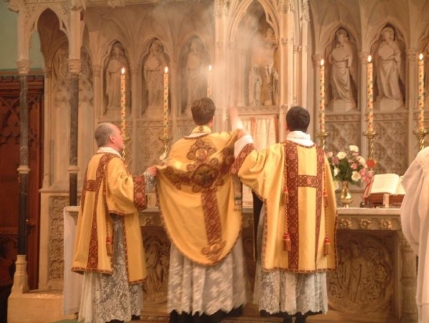
One Night with the King (2006)
Directed by Michael O. Sajbel. Tiffany Dupont, Luke Goss, John Rhys-Davies, John Noble, Tommy “Tiny” Lister, James Callis, Jonah Lotan, Omar Sharif, Peter O’Toole. FoxFaith.
By Steven D. Greydanus (Decent Films Guide)
Coming just a few weeks after the faith-and-football drama Facing the Giants, One Night With the King — a retelling of the Old Testament story of Esther — is the second overtly religious Christian-produced independent film to hit the big screen within a few weeks.
Facing the Giants was financed by a Georgia Baptist church, then picked up for distribution by Goldwyn. One Night with the King, directed by relative unknown Michael Sajbel (whose credits consist of a few films for Billy Graham’s World Wide Pictures) and produced by Gener8Xion Entertainment (the company behind the apocalyptic Omega Code thrillers), comes to theaters courtesy of FoxFaith, 20th Century Fox’s new faith-and-family-values division. If the success of The Passion of the Christ hasn’t yet sent the Hollywood studios scrambling to produce religiously oriented fare, it’s at least partly responsible for the interest in films like these that otherwise might have gone straight to video.
As that suggests, One Night With the King, like Facing the Giants, has a distinctly made-for-TV vibe, notwithstanding the biblical film’s visual spectacle and a distinguished supporting cast including Lord of the Rings alums John Rhys-Davies and John Noble and Lawrence of Arabia costars Peter O’Toole and Omar Sharif.
Sets, locations and especially costumes are quite good, with the Persian setting adding some exotic Bollywood-esque flavor to the usual ancient Near Eastern nomad couture. The only lapse in production values is some glaring CGI, used for a couple of waterfalls and a white moth that seems to have flown in, along with Rhys-Davies and Noble, from The Lord of the Rings. (The heroine even talks to the moth on a rooftop in the opening scene, like Gandalf atop Orthanc.)
The apparent Peter Jackson influence doesn’t stop there. One Night with the King opens with a voiceover prologue flashing back hundreds of years, in which we learn of (a) the forging of a sinister metal trinket and (b) an ominous act of defiance by a king following a victory in battle that will have dire repercussions for ages to come.
The king is Saul, who, despite Samuel’s orders to spare no one after conquering the Amalekites, allows King Agag to live. Samuel (O’Toole) kills Agag, but, in a non-biblical twist, Agag’s pregnant queen escapes. Following a midrashic tradition, Agag becomes the ancestor of the genocidally anti-Semitic Haman (James Callis, looking oddly like Jesus). Following the biblical story, Haman plots to exterminate the diaspora Jews in Persia, but is foiled by the courage and cunning of the heroine (Tiffany Dupont, Cheaper by the Dozen), whom King Xerxes (British pop star Luke Gross) makes his queen.
Haman makes his entrance on horseback amid ominous portents, in the company of black-swathed riders — I’m sure I heard Nazgûl screeches on the soundtrack. The whitened streets of Susa evoke Minas Tirith, the White City (though the architecture is vaguely early Naboo), accented by distinctly Jacksonian aerial cinematography.
Well, if you’re going to steal, steal from the best. Yet the screenplay, by Omega scribe Stephan Blinn, is home-video hackneyed rather than silver-screen sophisticated. Take Rhys-Davies’s opening voiceover: “From whence comes the purpose of a person’s life? Comes it by chance? Or does a call of destiny come for each of us?”
The problem is especially pronounced in the romantic scenes, in which Xerxes increasingly comes off like a smitten schoolboy mooning over the head cheerleader. “Know you how many times I tried to come to you after that first night?” Xerxes murmurs as he holds Esther. “How many evenings I spent counting the stars to keep my mind off of you? How many excuses I created just to avoid the other candidates?”
Um, why? He’s the king, right? What’s stopping him from being with the woman he wants (or not being with women he doesn’t want)? Later, as circumstances drive a wedge between the king and his bride, Xerxes pines for Esther’s affection with all the dignity and manliness of teenaged Anakin Skywalker carrying the torch for Amidala in Attack of the Clones. Not very attractive.

If all this, like the title of the film, sounds a bit romance-novelish, well, there’s a reason for that. The film is adapted from the book of Esther by way of the novel Hadassah: One Night with the King, written by Pentecostal preacher Tommy Tenney and published by Christian publisher Bethany House.
The novel, written in the form of a letter from the biblical Esther to a future royal bride-to-be, swoonily romanticizes Xerxes and Esther’s relationship, while turning Haman into a virtual forerunner of Hitler complete with a swastika-like “twisted cross” symbol adopted from India (the swastika has pre-Nazi roots in Hindu and Jain traditions).
The novel is of indifferent merit; despite a few nods to Jewish tradition (such as Haman’s descent from Agag), its most prominent feature may be glaring anachronism. From Esther’s opening salutation “Dear X…” to her lamenting the corruption of the word “intimacy” as a “prudish euphemism” for sex, the novel’s contemporary sensibilities are stamped on every page. (The letter probably should have started something like “Esther, Queen of Persia and wife of Xerxes, to…” And while the use of “intimacy” for sex roughly parallels the actual Hebrew euphemism “to know,” this usage is not corrupt or “prudish,” but profound.) Also, despite the ostensibly female narration, the novel’s romantic point of view is glaringly male-centered (one passage finds Esther advising her female reader on the kind of woman that a man really wants).
Though affecting to be an ancient Hebrew manuscript, the novel frequently betrays its native English-language roots, sometimes in unintentionally humorous ways. While Tenney consistently uses “G–d,” following the post-Masoretic tradition of omitting vowels in the divine Name, on the very first page of Esther’s account he has Esther herself explicitly comment on the use of “the traditional Hebrew abbreviated forms in referring to Deity.” This reference would have been meaningless in Esther’s day, since Hebrew writing had no vowels at all until centuries after Christ, let alone in the time of Esther! Later, Esther compares Haman’s “twisted cross” symbol to the X’s in her husband’s name, though to the best of my knowledge “Xerxes” has no X‑like characters in either Persian or Hebrew.
Though the novel takes significant liberties with the biblical story, the film departs further still. The canonical story opens with the defiance of Xerxes’s previous queen, Vashti, who refuses the king’s summons to appear at a feast where he wants to show off her beauty to his guests. The book of Esther explicitly draws out the potentially subversive implications of this act: What if other women, hearing of this, likewise refuse to obey their husbands? To ward off this danger, Xerxes dismisses Vashti and proclaims throughout the kingdom that all women must honor their husbands.
This event is all but unrecognizable in the film, in which Vashti’s refusal to appear is construed as an act of political resistance against her husband’s war with Greece, which the queen opposes. (The novel has a somewhat different angle on the event, claiming that Vashti refused to come at the feast because Xerxes wanted her to appear naked.)

Though both book and film versions incorporate elements of Jewish tradition, the story apparently sticks to the Hebrew text of Esther, ignoring the Greek additions in the Septuagint version of Esther, accepted as canonical by Catholics and Orthodox. Even when the film happens to go beyond the Hebrew text in exactly the same way as the deuterocanonical text, it ignores the deuterocanonical passages as potential source material.
Take the scene in which Mordecai prays to the Lord to save his people. The Hebrew text of Esther contains no prayers, but Mordecai is depicted offering just such a prayer in the Septuagint version of Esther. This deuterocanonical prayer would have been perfect for the movie’s purposes (“And now, O Lord God and King, God of Abraham, spare thy people, for the eyes of our foes are upon us to annihilate us…”). Yet instead the film merely has Mordecai use words drawn from Isaiah 40 (“They who wait for the Lord shall renew their strength…”). Is this Protestant bias, more open to Jewish tradition than Hellenistic Jewish writings accepted as scripture by the Catholic Church?
Neither the film nor the book sells the romance of Esther and Xerxes. Whether due to the screenplay, direction, actors, or some combination, Esther herself comes off as chipper, chirpy and charming, but lacking in gravitas and depth. She’s much given to mischievous, playful banter like “You think of me as a child? Well, you’re wrong… I’m much younger than that,” but her winsomeness falls short of real complexity and mystery.
Xerxes, with his bare chest, Fabio hair, and mithril‑y silver duds, looks like a bodice-ripper cover model or a 70s glam rocker. He’s supposedly captivated by Esther reading aloud from the book of Genesis; in the story of Jacob and Laban, Xerxes identifies Esther with — get this — Jacob, while he himself hopes to be her Rachel, her favorite, though he’s afraid he will only be her Leah. Oh dear.
What the heck is going on with Esther’s jewel pendant, which reflects luminous stars of David on surrounding objects when the light hits it just right — or does it? A late plot twist apparently suggests that it may be a bit like the jingle bells in The Polar Express: You’ve got to believe to understand, or something. Huh?
Christians lamenting the state of Hollywood sometimes flippantly comment that this or that Bible story “would make a great movie — intrigue, sex, violence, spectacle, etc.” By itself, though, that’s not a recipe for a great movie, but a mediocre one. The story of Esther could certainly be made into a great film. One Night with the King is not that film. In a number of ways, it’s not even that story.
Brief, distant grisly imagery and minimal violence; restrained sexual themes and mild sensuality.



































Log in to comment